目次
- 1 Trump’s 25% Tariff on Japan: Full Impact Analysis
- 1.1 Trump’s Shocking Announcement – 25% Tariffs and August 1 Deadline
- 1.2 The Essence of “Reciprocal Tariff” Policy – Trump Administration’s New Trade Strategy
- 1.3 Japanese Government Response – Expression of “Regret” and Determination to Continue Negotiations
- 1.4 Specific Impact on Japan’s Major Industries – Deepening Economic Risks
- 1.5 Market Reaction – Stocks Remain Firm Avoiding Worst-Case Scenario
- 1.6 Impact on Japan’s Overall Economy – GDP Downward Pressure and Widespread Ripple Effects
- 1.7 Specific Impact on Japanese Consumers – Rising Living Costs and Changing Purchase Behavior
- 1.8 Current Negotiation Status and Major Points of Contention
- 1.9 Policy Differences Between Japan and the U.S. and Impact on Future Cooperation
- 1.10 Future Negotiation Trajectory and Outlook
- 1.11 Japanese Public Opinion and Business Community Reaction
- 1.12 Japan’s Response Measures – Government, Corporate, and Individual Level Initiatives
- 1.13 Historical Perspective – Comparison with the Plaza Accord
- 1.14 Impact on Future Cooperation and Outlook
- 1.15 Conclusion – Multifaceted Response Strategy Required for Japan
- 1.16 References and External Links
- 1.17 Related Articles
Trump’s 25% Tariff on Japan: Full Impact Analysis
July 8, 2025 marked a historic turning point in U.S.-Japan trade relations. Donald Trump’s announcement of new tariff measures on Japanese imports, Japan’s government response, and the economic implications became crystal clear on this day. This article provides comprehensive analysis of the complex U.S.-Japan tariff negotiations and their far-reaching impact on our daily lives.
Trump’s Shocking Announcement – 25% Tariffs and August 1 Deadline
On July 7, 2025 (U.S. time), President Donald Trump announced via social media that he would impose new additional tariffs on 14 countries and regions, including Japan, starting August 1. This announcement sent major shockwaves through Japan-U.S. economic relations.
Details of Japan’s Tariff Rate Increase
The general reciprocal tariff rate on Japanese imports was raised from 24% to 25%, a 1% increase. This modest increase applied only to Japan and Malaysia among the 14 countries, interpreted as Trump’s strong dissatisfaction with negotiations with Japan. Reports indicate that Japan’s previous proposals have not resonated with Trump.
Importantly, this 25% general reciprocal tariff is not added on top of product-specific additional tariffs like those on automobiles. The 25% automobile tariff remains unchanged, while the new 25% general reciprocal tariff applies to other Japanese products.
Extension of Negotiation Deadline and Its Implications
The reciprocal tariff suspension deadline, originally set for July 9, was extended to August 1 through a presidential order. This gives Japan approximately three weeks after the July 20 Upper House election to conclude negotiations. The Japanese government views this extension as “effectively extra time” and hopes to turn the situation around.
Trump’s Claims and Warnings
The President harshly criticized trade relations with Japan as “not reciprocal at all” and emphasized these measures as “essential to correct the trade deficit.” He also mentioned that the trade deficit poses not only economic but also security threats to the United States.
Furthermore, he warned that if Japan imposes retaliatory tariffs, the U.S. would add those increases on top of its 25% tariff. The letter also stated these tariffs could be “adjusted upward or downward” based on future relations, suggesting possible review if Japan opens its trade markets and eliminates tariffs and non-tariff barriers.
Trump also mentioned that no tariffs would be imposed if products are built and manufactured within the United States – a clear message encouraging production relocation to America.
Trump’s Negotiation Strategy
Trump has showcased his tough negotiating stance, boasting about his Vietnam negotiations where he imposed 20% tariffs on their imports while securing 0% tariffs on U.S. products. Experts point to Trump’s strategy of gaining negotiation advantage through deadlines, describing this as a “leverage-focused” negotiation style linking tariffs, security, and currency policies, effectively an “ultimatum.”
The Essence of “Reciprocal Tariff” Policy – Trump Administration’s New Trade Strategy
“Reciprocal tariffs” aim to impose equivalent tariff levels on the same products from trading partners who levy high tariffs on U.S. goods. The Trump administration seeks to correct trade imbalances and eliminate the trade deficit while revitalizing domestic industries and increasing exports.
In April 2025, the Trump administration introduced uniform and reciprocal tariffs on global trading partners, notifying Japan of new tariff rates. The rate increased from 24% to 25%, with the negotiation deadline extended from July 9 to August 1.
While a weaker yen benefits Japan’s economy by enhancing price competitiveness in the U.S. market and boosting yen-denominated revenues, concerns remain about the impact on the global economy. There are fears of stagnating world trade, escalating trade wars, and uncertainty throughout the global economy.
Japanese Government Response – Expression of “Regret” and Determination to Continue Negotiations
On July 8, the Japanese government held an emergency meeting of the Comprehensive Response Headquarters with all cabinet members present following Trump’s announcement.
Prime Minister Shigeru Ishiba’s Statement
Prime Minister Ishiba expressed strong dissatisfaction with the U.S. government’s tariff increase announcement, stating it was “truly regrettable.” The Prime Minister acknowledged that points of disagreement remain between Japan and the U.S., and unfortunately no agreement has been reached.
However, the government views the 25% tariff announcement as effectively maintaining the status quo, as it avoided the feared 35% rate and the negotiation deadline was extended.
The Prime Minister stated, “This is the result of tough negotiations where we avoided easy compromises, demanded what should be demanded, and protected what should be protected.” He emphasized Japan’s policy of protecting national interests while aiming for an agreement beneficial to both countries. He also instructed comprehensive measures for domestic industries affected by the tariffs.
Minister Ryosei Akazawa’s Position
Minister of State for Economic Revitalization Ryosei Akazawa, who handles tariff negotiations, held a phone conference with U.S. Commerce Secretary Latnick on July 8 afternoon, expressing that even the 1% rate increase was “regrettable.”
At a press conference, Minister Akazawa clearly stated: “The automobile industry is a core industry, so without a Japan-U.S. agreement on that, we cannot agree on the package as a whole.” He made it clear that reducing tariffs on Japanese cars is an essential condition for any Japan-U.S. agreement.
Japan has already offered to expand imports of liquefied natural gas (LNG) in the energy sector and soybeans in agricultural products to the U.S., with some viewing that Japan has played most of its cards.
LDP Policy Research Council Chairman Itsunori Onodera’s Comments
Onodera, who heads the party’s U.S. Tariff Response Headquarters, strongly protested the U.S. “notification by a single letter,” saying he felt “strong indignation. This is completely unacceptable content.”
However, he also evaluated this as “proof that the Japanese government protected national interests without yielding an inch,” positioning the three weeks until August 1 as “the critical phase of negotiations” and urging the government to “continue negotiations with a strong stance without easy compromises.” He also indicated plans to strengthen domestic measures including stimulating domestic demand to protect domestic industries, employment, and people’s livelihoods.
Domestic Political Background
With the Upper House election on July 20, the hurdles for the Japanese government to make significantly different proposals have risen. Some point out that Trump’s announcement at this time aims to pressure the Ishiba administration before the Upper House election.
Opposition parties criticize Minister Akazawa’s seven rounds of U.S. negotiations as pushing the goal further away, calling for Prime Minister Ishiba to negotiate directly.
Specific Impact on Japan’s Major Industries – Deepening Economic Risks
The introduction of reciprocal tariffs raises serious concerns about their impact on Japan’s major industries.
Automobile and Auto Parts Industry
For the automobile industry, which is Japan’s core industry and accounts for over 30% of exports to the U.S., the 25% U.S. tariff poses “serious risks.”
Japanese exports of finished vehicles and parts to the U.S. face high tariffs, risking decreased sales due to price increases. A 25% additional tariff on automobiles was already implemented on April 3, 2025.
Six Japanese automakers have published outlooks on the tariff impact on their FY2025 performance, and the Bank of Japan has pointed to increased rush exports to the U.S. ahead of tariff increases. Predictions suggest U.S. automobile demand could decrease by 14%.
Minister Akazawa acknowledged that without agreement in the automobile sector, no overall agreement is possible. The U.S. has historically demanded Japan’s voluntary export restraints on automobiles, and reports suggest they may demand their revival, which Japan refuses.
Performance deterioration may lead to downward pressure on employment and bonuses at export-driven companies.
Electronics and High-Tech Sector
Price increases in semiconductors and precision equipment risk losing market share to products from South Korea and Taiwan. While tariff-induced cost increases are unavoidable, there’s potential for competitive advantage compared to China.
However, these industries report declining profit margins in the U.S. market, with overall challenging business conditions continuing. On April 11, 2025, the U.S. announced exclusion of computers and smartphones from reciprocal tariffs.
Machinery Industry
Access restrictions to the U.S. market are becoming prominent, with concerns about decreased exports to the U.S. and suppressed capital investment. Non-electrical machinery sectors are particularly vulnerable.
Japan Machine Tool Builders’ Association (JMTBA) data shows machine tool orders declined in early 2025, with tariff uncertainty raising concerns about the machinery industry’s outlook.
Agricultural Products
The U.S. government is pressing Japan to expand imports of agricultural products including rice, wheat, and pork. Japanese agricultural groups criticize this as “tribute,” with particular opposition to expanded soybean and corn imports as “outrageous methods” running counter to Japan’s efforts to improve food self-sufficiency and transform domestic agriculture.
Many countries prioritize protecting domestic farmers, raising concerns about retaliatory measures through high tariffs. The U.S. views Japanese agricultural products, automobile safety standards, and EV charging standards as non-tariff barriers, potentially demanding further market opening.
Regarding U.S. corn and soybeans Japan has already been asked to purchase, the National Federation of Farmers’ Movements (Nouminren) expresses strong concern that this “will destroy Japanese agriculture.” The Ministry of Agriculture, Forestry and Fisheries faces difficult steering between protecting domestic agriculture and international negotiations.
Other Manufacturing Industries
In manufacturing industries dependent on imports, rising procurement prices affect product prices, directly impacting corporate profit margins and price competitiveness. More companies are considering shifting from overseas to domestic production.
Tariffs cause supply chain disruptions and raw material price increases, ultimately leading to consumer price inflation. Tariff impacts encompass broad risks affecting multiple economic factors including growth, employment, prices, and trade structure.
Market Reaction – Stocks Remain Firm Avoiding Worst-Case Scenario
Stock Market
Japan’s stock market on July 8 remained relatively firm despite the U.S. tariff announcement. The Nikkei average rebounded, ending morning trading in positive territory.
This reflected relief that the announced 25% tariff rate avoided worst-case scenarios like 35%, and that the negotiation deadline was extended. The yen’s weakening against the dollar in forex markets supported Japanese stocks through expectations of improved earnings for exporters. U.S. stocks declined on tariff concerns.
Foreign Exchange Market
Following the U.S. tariff announcement, the dollar strengthened against the yen, temporarily reaching 146.46 yen per dollar. However, it subsequently lost momentum due to profit-taking.
Going forward, if U.S. inflation concerns strengthen, expect higher U.S. long-term interest rates and a stronger dollar/weaker yen. If economic deterioration concerns strengthen, expect lower U.S. long-term interest rates and a weaker dollar/stronger yen. The dollar-yen rate is expected to trade in a range centered around 140-150 yen for some time.
Impact on Japan’s Overall Economy – GDP Downward Pressure and Widespread Ripple Effects
Impact on Economic Growth
Economists predict U.S. tariffs could push down Japan’s GDP by 0.2% to 1.8%. Nomura Research Institute estimates the overall additional tariffs will reduce Japan’s GDP by 0.85%.
The Bank of Japan forecasts that growth pace will slow in FY2025 and FY2026 due to various countries’ trade policies, with corporate earnings expected to shift to a declining trend centered on manufacturing. Accordingly, capital investment growth is likely to slow. Rising uncertainty in domestic and international economies may lead to downward revisions in capital investment plans.
Corporate Earnings and Capital Investment
Sumitomo Mitsui Trust Bank’s outlook indicates that deteriorating earnings in export-driven industries may somewhat dampen momentum for winter 2025 bonuses and spring 2026 wage negotiations. However, they note wage increase capacity remains as labor’s share of income continues its declining trend in these industries.
Teikoku Databank estimates that if Trump tariffs continue, corporate bankruptcies in Japan will increase by over 3%.
Employment and Personal Consumption
Risks include downward pressure on employment and bonuses at export-driven companies. Additionally, renewed U.S. inflation, rising interest rates, and rapid yen depreciation could raise domestic prices, potentially breaking real income and personal consumption momentum.
Meanwhile, against a backdrop of structural labor shortages, the improving trend in real income is expected to continue. The Bank of Japan sees personal consumption maintaining a moderate increasing trend backed by improving employment and income conditions, despite weakening consumer sentiment due to price increase impacts.
Specific Impact on Japanese Consumers – Rising Living Costs and Changing Purchase Behavior
The new U.S. reciprocal tariff policy’s impact extends beyond corporate and national issues to certainly affect our individual lives.
Rising Living Costs
Prices will rise for products and services highly dependent on imports, particularly home appliances, smartphones, and clothing. Reports indicate smartphone prices at some online stores have already risen by an average of 8-15% as of April 2025.
Rising logistics costs also raise concerns about food and gasoline price increases. High tariffs may cause Consumer Price Index (CPI) increases and inflation, reducing consumer purchasing power and potentially cooling consumption.
Changing Purchase Behavior and Reduced Choices
Consumers increasingly consider substitute products or review purchase frequency. For middle and low-income groups, rising food and daily necessity prices become a direct burden, strengthening frugal tendencies.
Impact on Investment and Asset Management
Intensifying trade friction causes unstable movements in financial markets, with U.S. stock markets temporarily plunging. Tech stocks and export company shares with high trade dependence are particularly vulnerable, potentially forcing individual investors to reconsider risk diversification and strategies.
Impact on Overseas Travel, Study Abroad, and International E-commerce
In countries with deteriorating U.S. relations, secondary effects are expected including stricter visa procedures, rising airline route prices, and increased international shipping costs.
Current Negotiation Status and Major Points of Contention
Japan-U.S. tariff negotiations have already gone through seven rounds of ministerial-level discussions but still haven’t reached agreement.
Automobile Tariffs
Japan prioritizes eliminating automobile tariffs, but the U.S. suggests possibly demanding revival of voluntary export restraints, making negotiations difficult.
Japan argues that poor U.S. car performance in Japan isn’t due to market closure but defeat in free competition due to American cars being “large, unwieldy, expensive, and fuel-inefficient.”
Agricultural Products
President Trump strongly pressures Japan to expand imports of U.S. agricultural products, especially rice. While Japan has offered expanded imports of LNG and soybeans, agricultural groups view these as “tribute” and strongly oppose them.
Given the Trump administration’s goal of correcting the trade deficit, expanding energy and agricultural imports appears relatively feasible as they also help address high prices and diversify procurement sources.
Economic Security Cooperation
While Japan and the U.S. agree on economic security cooperation, differences exist in specific regulatory content like semiconductor export controls due to different economic rationales. The U.S. reportedly seeks Japan’s cooperation in its “decoupling” policy toward China.
Currency and Tax Systems
The U.S. may raise currency (strong dollar) and tax systems like Value Added Tax (VAT) in negotiations, potentially significantly impacting Japanese industries regardless of sector. The Japanese government’s challenge is deflecting excessive U.S. demands by limiting currency discussions to between financial authorities like the Ministry of Finance.
Policy Differences Between Japan and the U.S. and Impact on Future Cooperation
As the concept of economic security expands, several policy differences between Japan and the U.S. may affect future cooperation.
Differences in Perceptions of Tariff Policy and Trade Fairness
While the Japanese government expresses “regret” over U.S. reciprocal tariff introduction, it prioritizes negotiated solutions over immediate countermeasures. Japan’s basic philosophy supports free trade, having worked to reduce tariffs and eliminate non-tariff barriers.
While serious risks exist for Japan’s major export industries like automobiles that heavily depend on the U.S. market, Japan seeks diplomatic solutions considering alliance relations and regional stability. The Ministry of Foreign Affairs continues difficult negotiations balancing maintenance and strengthening of Japan-U.S. relations with economic interests.
Economic Rationality Differences in China Policy
The U.S. has introduced comprehensive export control measures on advanced semiconductors, manufacturing equipment, and technology to China, backed by hegemonic competition with China in both economic and security aspects.
These regulations are considered economically irrational for Japan’s semiconductor manufacturing equipment industry, where exports to China account for about 40%. Even between Japan and the U.S. with aligned basic security interests, completely aligning economic rationality is difficult due to different corporate strengths and exposures. Japan designs its own regulatory measures considering national interests.
Attitudes Toward Integrating Trade, Fiscal, and Security Policies
The Trump administration advances regime change integrating trade, fiscal, and security policies in negotiations. This demands “fair deals” even from allies, applying pressure based on trade deficits and excessive U.S. security burdens.
Japan urgently needs to revise its 80-year post-war dependence on the U.S. and build autonomous national strategies with negotiating cards while maintaining the Japan-U.S. alliance as its foundation.
Digital Trade Rule Formation
The Japan-U.S. Digital Trade Agreement establishes provisions favorable to giant platform companies like GAFA, with Japan and U.S. directions largely aligned in this field.
However, digital trade lacks globally unified rules, with the U.S., China, EU, India, and other emerging/developing countries conflicting over data flow, privacy protection, and government regulation of companies. Japan and U.S. establishment of corporate-priority rules may sharpen confrontational structures in multilateral negotiations including the WTO.
Launch of Security Clearance System
Japan launched its security clearance system based on the “Important Economic Security Information Protection and Utilization Act” on May 16, 2025. This establishes public-private systems for safely accessing particularly confidential information harmful to national and citizen security, such as cyber threat information and supply chain vulnerabilities, contributing to deepened Japan-U.S. information sharing.
Future Negotiation Trajectory and Outlook
Negotiation Schedule and Prospects
U.S. Treasury Secretary Bessent stated that if agreements can be reached with 10-12 major trading partners by the July 9 deadline, the remainder can be concluded by September 1. Countries and regions may respond with either “agreement announcement,” “suspension extension (continued 10% basic tariff application),” or “reciprocal tariff rate application” depending on negotiation progress.
U.S. tariff policy is difficult to predict, with the possibility of “targeted” measures against specific countries or industries. While Trump’s tariff notification is considered “almost a final proposal,” his statement that it’s “not 100%” leaves room for negotiation, though the trajectory remains unclear.
The Japanese government emphasizes continuing persistent negotiations to maximally protect national interests in U.S. negotiations. Whether the Ishiba administration’s negotiating stance changes and early agreement is reached after the ruling coalition maintains some strength following the Upper House election remains to be seen.
AI-Based Scenario Analysis
AI scenario analysis points to a catastrophic scenario of “escalating confrontation and retaliatory measures” (15% probability), making persistent diplomatic efforts and risk management system construction essential to avoid this. Reality is likely to be a “hybrid situation” with elements from multiple scenarios intertwined in complex ways.
Japanese Public Opinion and Business Community Reaction
Public Opinion Survey Results
In a JNN public opinion survey conducted July 6-7, 57% responded that Japan should take countermeasures against the U.S. The Ishiba Cabinet’s approval rating hit a post-inauguration low of 30.6%.
Business Community Reaction
Despite the tariff measures, markets showed relatively calm movements with the Nikkei average rebounding on July 8. This reflects relief at avoiding worst-case scenarios (like 35% tariffs) and the negotiation deadline extension.
However, the business community expresses strong dissatisfaction with what they call “insulting negotiation methods” from the U.S. The Japan Automobile Manufacturers Association and Japan Business Federation request tariff elimination/reduction efforts, maintenance and strengthening of free trade systems, and government support measures.
Economic Perspective
From an economics standpoint, the general conclusion is that “tariffs have large disadvantages for the country as a whole.” The burden increase on all citizens exceeds benefits to protected domestic industries. President Trump’s tariff policy is analyzed as political judgment prioritizing protection of specific domestic industries and employment maintenance over overall economic efficiency.
Investor and Market Perspective
As of July 8, markets view Trump tariffs as “systematic risk” (market-wide risk) while showing relief at avoiding worst-case scenarios and negotiation period extension. Some encourage investors that such “unreasonable” situations test “investor ability and capability,” reminding them that “opportunities come disguised as crises.”
Japan’s Response Measures – Government, Corporate, and Individual Level Initiatives
Government and Diplomatic Level Response
Continuing Negotiations and Deadline Extension: While expressing “regret” at President Trump’s tariff announcement, the Japanese government shows its stance of continuing negotiations while avoiding easy compromises and protecting national interests to achieve mutually beneficial agreements. Japan-U.S. tariff discussions continue at ministerial levels with 5th and 7th rounds completed.
Considering Negotiation Cards: Given President Trump’s demand for trade deficit reduction, expanding energy and agricultural imports appears relatively feasible. Concessions on agricultural products like rice, wheat, and pork, or non-tariff barriers like automobile safety standards and EV charging standards could become negotiation cards.
Strengthening Domestic Measures: The government plans measures to mitigate impacts on domestic industries and employment. The Democratic Party for the People proposes bold domestic measures including promoting domestic automobile sales and across-the-board consumption tax cuts.
Exploring Multilateral Cooperation: While prioritizing calm negotiated solutions, deeper analysis and response are needed considering changes in international situations and future of existing trade agreements and geopolitical structures. Reiwa Shinsengumi proposes negotiating with the U.S. as a group with Southeast Asian and “Global South” countries rather than one-on-one.
Corporate Level Response
Export Destination Diversification and Market Diversification: Reducing dependence on the U.S. market and accelerating sales channel expansion to other regions like Canada, Mexico, Asia, and Europe is important. In uncertain environments, flexibility to adjust course with changes, accurate information gathering, quick decision-making, and diversified supply chains and market development are keys to sustainable growth.
Examples include tea companies expanding sales to Canada and Mexico, agricultural machinery manufacturers developing unique snow removal equipment for North American markets, and urethane processing factories entering disaster prevention fields.
Supply Chain Review and Optimization: To minimize tariff impacts, companies need to consider diversifying procurement sources and production bases, building procurement networks not dependent on specific countries. Moving production bases to regions with lower tariff burdens and improving logistics efficiency are also effective.
Cost Pass-Through Strategy and Maintaining Price Competitiveness: Companies must carefully consider how much tariff-induced cost increases to pass through to prices while exploring ways to minimize customer impact. As tariffs reduce import price competitiveness, companies need to counter through cost reduction and developing unique products.
Technological Innovation and New Field Challenges: Pursuing product differentiation and value enhancement through technological innovation and brand strengthening is important. Shifting beyond existing business frameworks to different fields is also an effective strategy.
Cooperation with Government and Industry Associations and Utilizing Support Systems: Cooperating with governments and industry associations to support negotiations for tariff reduction or exemption is required. Active utilization of public support systems and subsidies for import/export is recommended, including JETRO’s “Support Program for 10,000 New Exporters,” agricultural and food export support measures, and Small and Medium Enterprise Agency support systems. METI’s “Mikata Project” considers priority adoption for automobile and auto parts industries affected by tariffs.
Utilizing Trade Agreements (EPA/FTA): Utilizing EPAs and FTAs, thoroughly obtaining certificates of origin to receive tariff preferences, optimizing tariff costs and minimizing risks is desired.
Digital Transformation and AI Utilization: Advancing digital transformation (DX) including improved demand forecasting and inventory management accuracy using AI is also an effective measure.
Constant International Situation Monitoring and Scenario Planning: Constantly monitoring tariff rate changes, national policies, currency fluctuations, trade friction, and geopolitical risks while conducting scenario planning to build systems capable of responding to market changes is important.
Consumer Level Response
Choosing Domestic Products: Choosing domestic products not dependent on imports is an effective lifestyle defense avoiding price fluctuation risks.
Household Budget Review: Clarifying spending priorities and reviewing household management serves as a countermeasure against tariff impacts. Using price comparison sites, diversifying asset management, stockpiling daily necessities, and reviewing subscription services are recommended.
Using Public Consultation Services: When necessary, using public consultation services and municipal living support systems enables household management with peace of mind.
Historical Perspective – Comparison with the Plaza Accord
Japan-U.S. trade relations have a long history since Commodore Perry’s arrival in the mid-19th century. While developing into a strong alliance post-war, Japan’s export-led growth since the 1960s, particularly in automobiles and electronics, caused trade imbalances and a history of trade friction.
Some point out the current situation recalls the “Japan bashing” and Plaza Accord of the 1980s. While the Plaza Accord involved coordinated intervention by five advanced countries, the Trump administration’s approach appears more authoritarian, applying unilateral pressure through bilateral negotiations.
Unlike the Plaza Accord of the 1980s involving coordinated intervention by five advanced countries, the Trump administration’s “Mar-a-Lago Accord concept” appears to be a collection of bilateral negotiations where the U.S. applies unilateral pressure on numerous countries using tariffs and security as leverage, making agreement formation far more difficult and authoritarian.
Impact on Future Cooperation and Outlook
These policy differences may have the following impacts on future Japan-U.S. cooperation:
Increased Uncertainty: The large swings in U.S. policy changes heighten economic outlook uncertainty. Companies are forced to respond flexibly including supply chain reviews, market diversification, and cost pass-through strategy considerations.
Prolonged and Complex Negotiations: Japan-U.S. negotiations for tariff reduction are expected to face difficulties finding balance between U.S. trade deficit reduction demands and Japanese domestic industry protection. The results of Japan’s Upper House election (July 20, 2025) are noted as potentially key to future Japan-U.S. negotiation developments.
Negative Impact on Japan’s Economy: U.S. tariffs could push down Japan’s GDP by 0.2% to 1.8%, with slowing export growth and accelerating U.S. inflation also expected. The automobile industry, electronics, and machinery industries may suffer major damage, with downward pressure on employment and bonuses and increased SME bankruptcies predicted.
Expanded Defense Burden: As the U.S. uses security burdens as negotiation cards, demands for increased Japanese defense spending may become realistic.
Conclusion – Multifaceted Response Strategy Required for Japan
U.S. reciprocal tariffs represent not mere trade measures but an important turning point in complex and strategic Japan-U.S. economic relations, requiring comprehensive and flexible responses from Japan.
While both Japan and the U.S. intend to deepen cooperation in economic security, policy differences exist, requiring Japan to increasingly prepare insights based on objective data analysis and flexible, multifaceted strategic options.
Approaching the new August 1 deadline, we face an important phase that could significantly impact Japan’s economy. The Japanese government emphasizes continuing persistent negotiations to maximally protect national interests. Companies need to implement multifaceted response measures including export destination diversification, supply chain reviews, and differentiation through technological innovation.
We individuals may also need to consider lifestyle defense measures including reviewing household management for price fluctuation risks and choosing domestic products. The trajectory of Japan-U.S. tariff negotiations remains closely watched as we approach the August 1 deadline.
References and External Links
- Ministry of Foreign Affairs of Japan – Official information on Japan-U.S. relations and trade negotiations
- Ministry of Economy, Trade and Industry (METI) – Trade policy and industry impact analysis
- Ministry of Finance – Tariffs and international financial policy
- Bank of Japan – Economic and price outlook
- Japan External Trade Organization (JETRO) – Trade and investment consultation, export support
- Japan Automobile Manufacturers Association – Automobile industry trends and statistics
- Small and Medium Enterprise Agency – Support systems for SMEs
Related Articles
- U.S. Treasury Secretary Bessent on Economic Policy Shift
- Trump Tariffs Impact on Japan’s Auto Industry
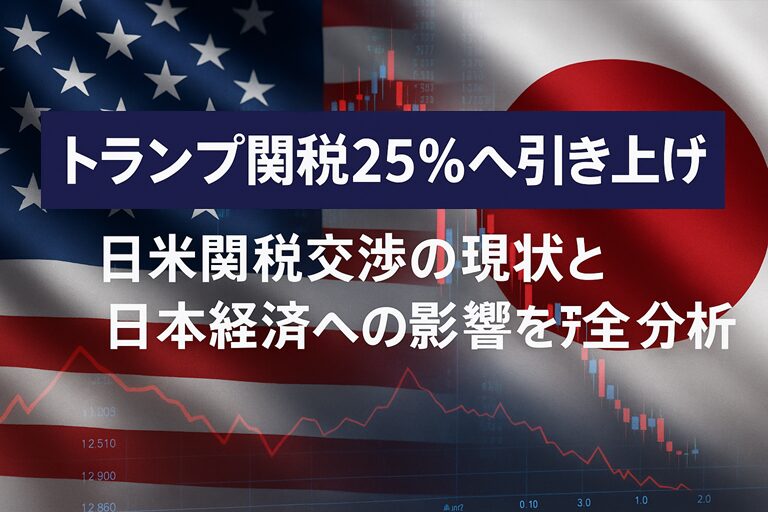
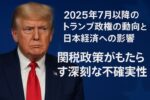


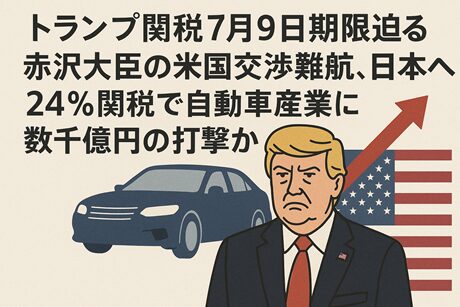

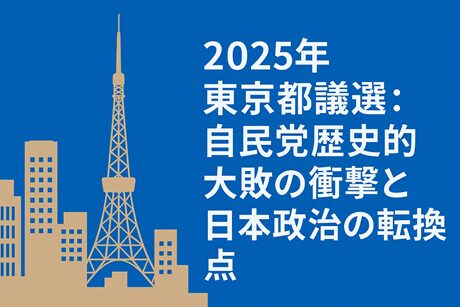
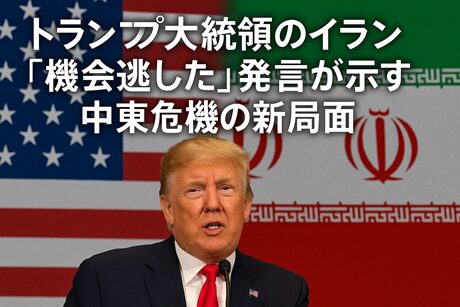
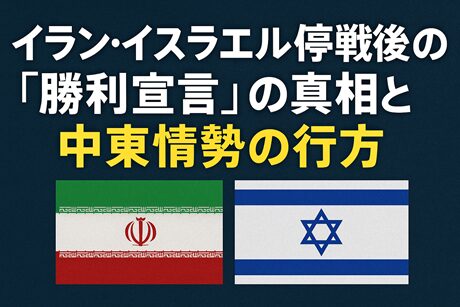
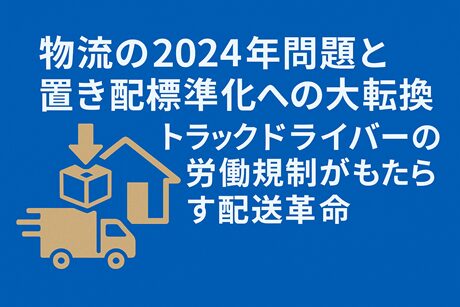
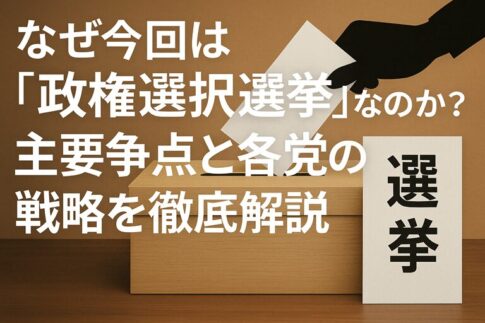

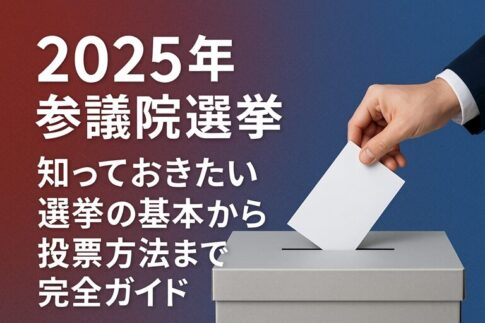
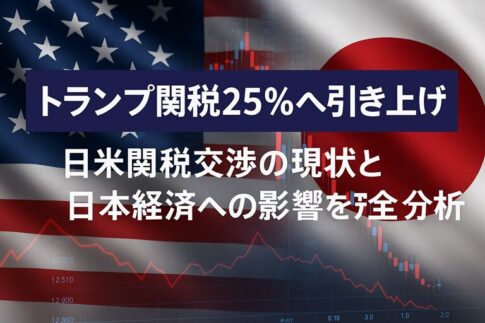


Leave a Reply